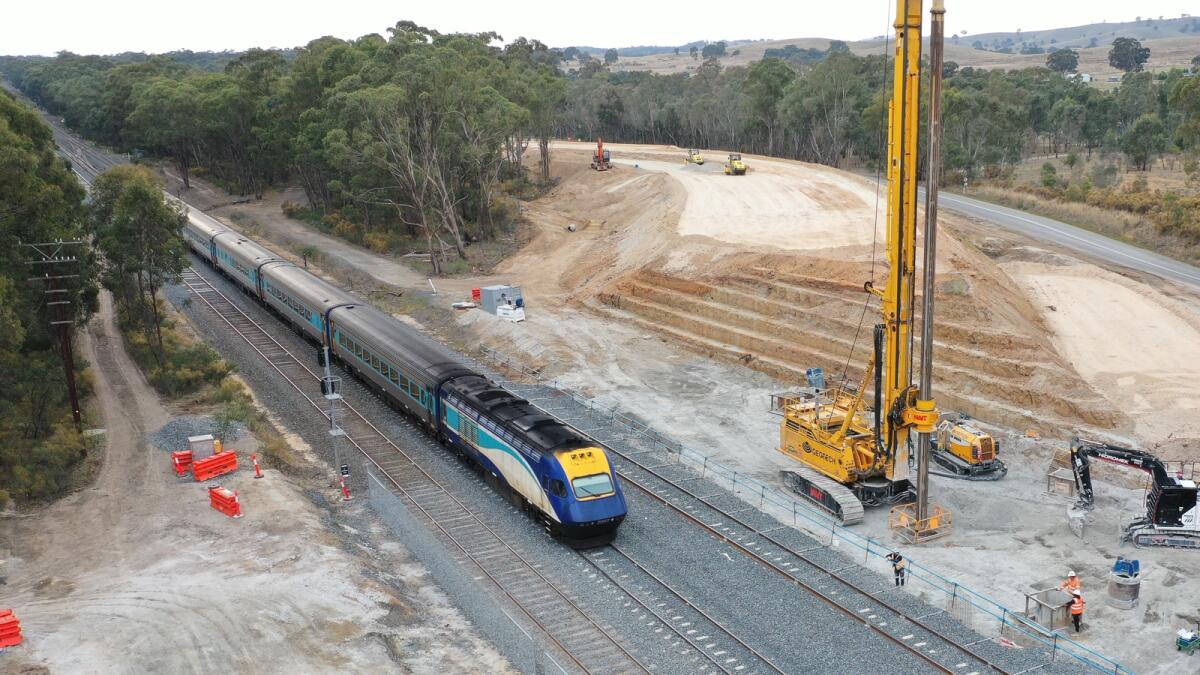For almost a century, two segments of Melbourne’s sprawling tram network have passed tantalisingly close together outside Queen Victoria Market but never joined.
That will change next month when the transport department builds a small section of track across the intersection of Elizabeth and Victoria streets – paving the way for a potential rejig of some of the city’s busiest tram routes.

The connection – about 50 metres long – is one of several “missing links” around the network long called for but never built.
It will make it possible for trams from North Melbourne to continue moving east – past the market along a dormant stretch of track on Victoria Street – and then turn right into Swanston Street.
Those trams currently travel down Elizabeth Street and stop at the Flinders Street terminus. The link could enable new cross-city routes between West Maribyrnong and destinations south of the Yarra via St Kilda Road.
The state government is tight-lipped about any future route changes, but a works notifications published in February said the project would “create potential for Swanston Street to be connected to North Melbourne” and the Arden urban renewal precinct “in the future”.
Rail Futures Institute president John Hearsch said the Queen Victoria Market connection was the first of several missing links that should be built to open better cross-city travel on the tram network.
“There’s so many opportunities at a relatively modest cost to significantly improve the network,” said Hearsch, whose independent organisation researches and advocates for better public transport.
“You can then start re-routing some very long-established tram routes, some of which haven’t changed in 50 years, notwithstanding how the city and suburbs have changed in that time.”
Hearsch said the government should also extend tracks along Arden Street, North Melbourne, on Spencer Street to the new Arden urban renewal precinct, and build the 300-metre Park Street link in South Melbourne so some St Kilda Road trams could divert through Clarendon and Spencer streets in the CBD.
He also suggested extending the track about 700 metres further east along Victoria Street in the CBD to connect with tracks on Victoria Parade. That east-west link along Victoria Street was first proposed by the Melbourne and Metropolitan Tramways Board in 1923.
As one example of the kind of network changes that would make possible, the Rail Futures Institute proposes a circular tram route connecting employment and residential hubs around the inner city.
Malcolm Rowe, a volunteer at the Melbourne Tram Museum in Hawthorn, said the dormant section of track along Victoria Street between Elizabeth and Swanston streets hadn’t been used regularly for more than 30 years, other than for direct services to the Shrine of Remembrance on Anzac Day.
The section was first built in 1926 to transfer Essendon trams from Haymarket to the Swanston Street corridors. It was then used as the main city terminus for Swanston Street trams until 1991, when the terminus moved to the University of Melbourne.

Rowe said the fact those routes never connected was a legacy of the network’s early history, when trams from the north-western suburbs went down Elizabeth Street and those from the south went up Swanston.
“So many of our routes have never changed from the 1880s, when they were built as cable trams,” he said.
Works on the Victoria Street tracks are set to start in June. Works notifications show that tracks at the corner of Swanston and Victoria streets – which cut across the corner opposite City Baths – will be sharpened into an L-shape turn.
That will create new open space the City of Melbourne wants used for outdoor dining.
A state government spokesman said the works at the intersection of Elizabeth and Victoria streets would “allow trams to be diverted around incidents and minimise disruptions to passengers”. But he would not comment on future route changes or further network improvements.
“We’re continually looking at opportunities to improve the world’s biggest tram network, including on how we can deliver better transport links,” the spokesman said.
The government published a “Melbourne Tram Plan” late last year, but it did not mention any specific network extensions, including the long-awaited routes to Fishermans Bend.
Public Transport Users Association spokesman Daniel Bowen said the Metro Tunnel rail line would take demand off Swanston Street trams when it opened next year, and present an opportunity to rethink the network.
“It does fundamentally change the flow of people in and around the CBD, so they should be looking at what options there are to change tram routes to better use that capacity,” Bowen said.
The Age



Have trans begun running on this segment?